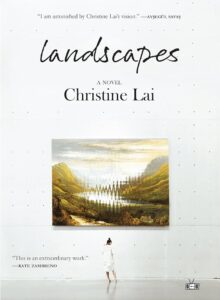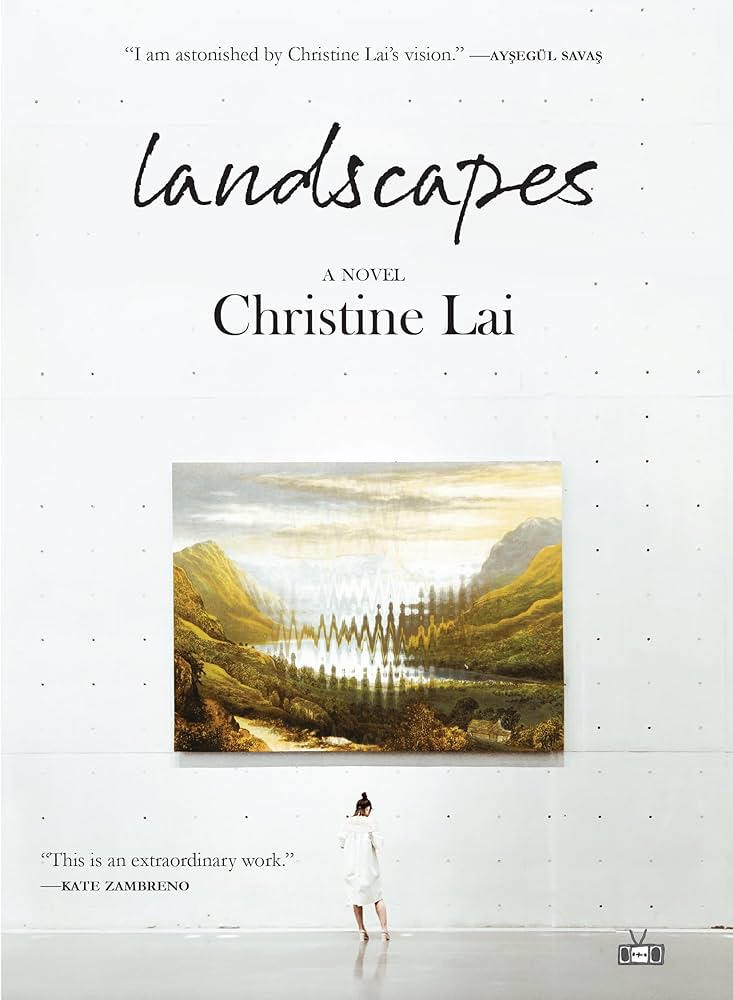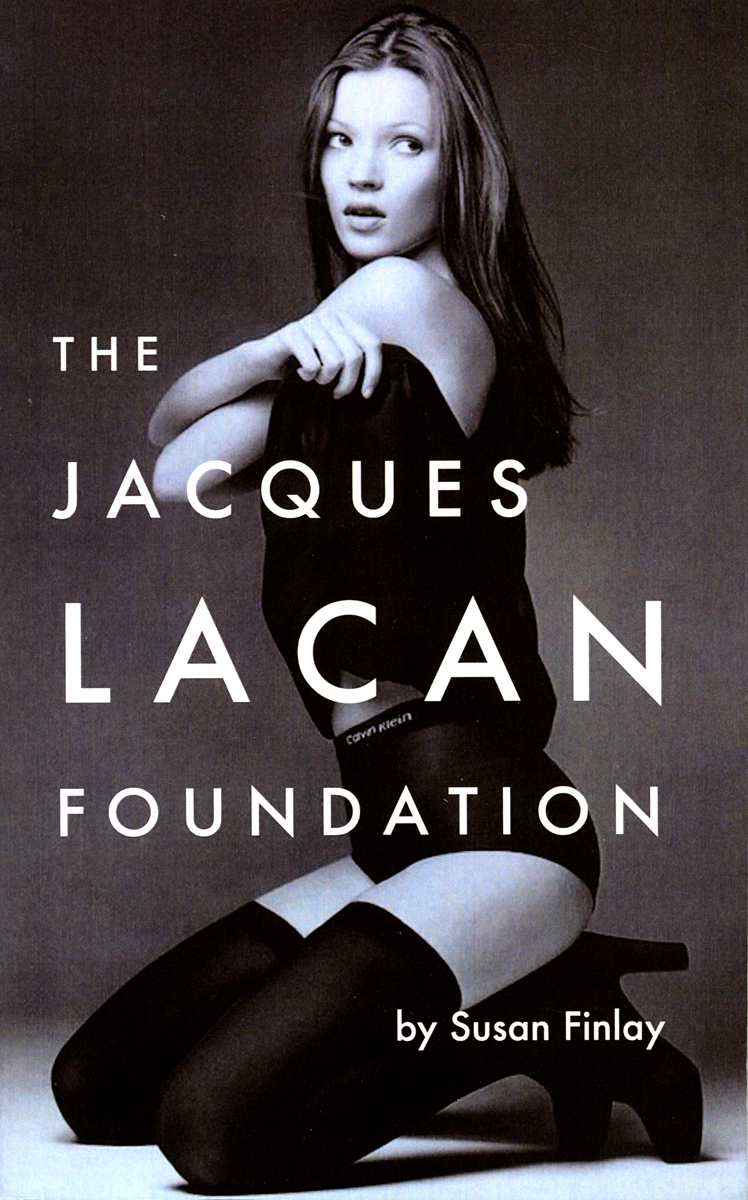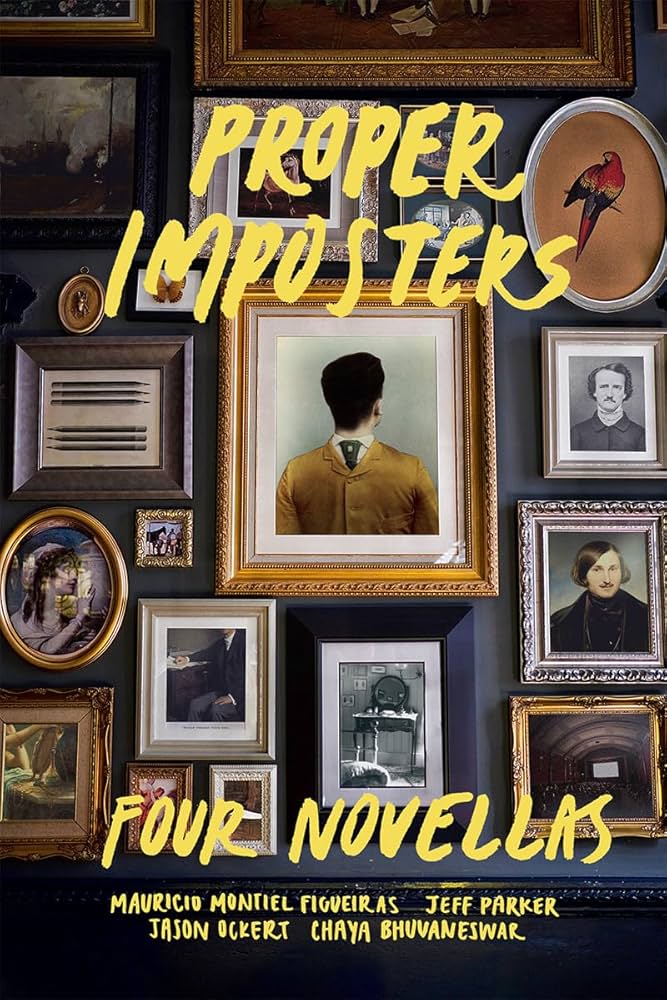By CHRISTINE LAI
Reviewed by S. ELIZABETH SIGLER

The walls of the art gallery behind the rotunda are lined with large paintings of gods and goddesses that loom above the viewer, giving the sense that the mythological figures are larger than life. On its own wall—separate from its goddess-themed counterparts—is an 1817 oil painting by Jacques-Louis David. “Cupid and Psyche” is an arresting image that shows a teenage Cupid smirking at viewers—like he’s letting them in on a joke—as he tosses an arm over Psyche. Both of the painting’s subjects are fully naked. Psyche is asleep, so the viewer can only guess how she would feel if she were to realize how Cupid is showing off his “sexual conquest” by slinging his arm between her breasts.
If I’m posted near the painting, I try to catch the initial reactions of the Cleveland Museum of Art’s various guests. After I had started to settle into my role as one of many Gallery Guards, I realized that I treat the painting as a psychosocial litmus test of sorts. Slower, quieter evenings may enable me to give a little bit more energy to my sneaky observations; I’d be able to take my sociological speculations deeper if I had the space for boredom or if the only guests I’d see during my shift came in piddly, predictable waves.
When the museum is open until 9:00 PM, it’s a popular date spot. I’ve seen several couples consisting of a male-presenting person who bounds up to the painting, thinking it’s one of the best objects he’s seen so far, and a female-presenting person who stands behind him, seemingly nonplussed. Those couples interest me more than the painting itself—are they on a second date, or have they been dating awhile? Is the woman clocking a potential red flag, or does she shake it off and tell herself that he’s just a funny guy? After all, the image as a whole is kind of awkward.
The gallery to the right of this one contains an oil painting (on linen) titled “Antiochus and Stratonice.” The scene depicted by Jean-Auguste-Dominique Ingres shows a ghastly, bedridden royal named Antiochus. Seleucus doesn’t want his son to die young—so, after the doctor notes that his mysterious illness is caused by a quickening of the pulse that spikes whenever Stratonice is around, Seleucus “selflessly offers Stratonice to his son Antiochus.” Before she was given to Antiochus, Stratonice had been married to Seleucus—Antiochus’s biological father. By then, the pair had a child together- Antiochus’s half-sibling. My description of the scene depicted in “Antiochus and Stratonice” draws from the interpretation put forth on the painting’s accompanying placard.
How did Stratonice feel about being married to her stepchild six years after her seventeen-year-old self had been married off to a man twenty-five years her senior? It’s hard to tell from her face. Some of the figures depicted on a painting (yes, a painting within a painting) that hangs on Antiochus’s bedroom wall show more expression than Stratonice’s downward gaze, her body turned away from Antiochus’s sickly desperation.
The questions raised by Penelope—the narrator of Christine Lai’s novel Landscapes—are similar in tone, though deeper and more profound than the things I wonder about when I mill around the museum on a slow night. Thorough reflections on art in the form of micro-essays are spliced between Penelope’s observations as she goes about day-to-day life while archiving the various artifacts that have survived Mornington Hall’s gradual erosion.
Years before being offered the position of archivist and librarian, Penelope had come to Mornington Hall—a restored countryside estate located a few hours from London—excited to start a fellowship and put her graduate studies to use. When she was a fellow, Penelope lived through some rough life experiences. At the same time, she endeavored to learn more about art history and take advantage of Mornington’s resources. The analytical writings that Penelope shares with us would read much differently if she had not gone through what she did while at Mornington Hall, or if she hadn’t been offered a fellowship in the first place.
All nine of Penelope’s meditations on art view pieces representing sexual assault through various lenses: the artists being dissected, art critics, and those who would have viewed the art in a museum. Despite the challenging topics of the art Penelope analyzes, the reader may feel something like hope if they’re to consider each of the essays together after finishing Landscapes.
Early in the novel, Penelope takes us to the Loggia dei Lanzi in Florence, Italy. She wonders what the Renaissance viewers would have thought when they encountered Giambologna’s “The Rape of the Sabine Women” (1583) or Cellini’s “Perseus With the Head of Medusa” (1545-1554). It was around the same time that Donatello’s “Judith and Holofernes” (ca. 1456-57) was next to the entrance of the Palazzo Vecchio. But Florence authorities quickly decided that “Judith and Holofernes” wasn’t sending an appropriate message to visitors of the civic center. The statue of a woman beheading a man was relocated to a more remote location tucked in the back of the Loggia.
After fully setting the abysmal scene described briefly in the above paragraph, Penelope tells us how the art being referenced was seen by Renaissance-era museum goers: “Two things are for certain. First, the Renaissance spectators would have applauded Giambologna and Cellini for the beauty of their work. Second, the male viewers would have read the sculptures as depictions of glorious conquest, and they would likely have identified with the Roman soldier and with Perseus, who demonstrate the masculine ability to dispossess enemies. Aside from being narratives of conquest, the sculptures were also titillating spectacles of pleasure, throbbing with erotic potential. In the memory of the spectators, the Sabine woman would have stood out for her perfectly sculpted breasts, and Medusa endured as a beautiful, voluptuous corpse laying languidly at Perseus’s feet.”
At the novel’s halfway point, one of Penelope’s writings on art is centered around “Untitled (Rape Scene)”—a 1973 performance piece by Cuban American artist Ana Mendieta. Mendieta’s performance piece was part of a feminist art movement that had originally taken hold in the late 1960s. As Penelope notes: “Feminist performance artists (such as Suzanne Lacy and Yoko Ono) began to challenge the so-called heroic rape tradition in Western art, in which paintings and sculptures aestheticize sexual violence. Projects such as Lacy’s influential Ablutions (begun in 1971), with its narratives of suffering and its use of blood and viscera, wrote over the eroticized, compliant bodies in the works of the Old Masters. Feminist art historians, also, began to question the celebratory and eroticized representations of rape which, in spite of their mythological or historical origin, seemed to glorify the act.”
The above quote is one particular passage I was thinking of earlier when I suggested that the reader may find a surprising spark of hope in humanity if they’re to read each of Penelope’s analyses and then consider her writings on art all together. Her final art writing platforms a 2018 installation piece that the artist created after conducting interviews with hundreds of sexual assault victims.
In the process of rereading Penelope’s analytical entries, I noticed that the precise locations of each insertion serve as an ingenious sort of plot device. See, after a point, the reader can surmise that Penelope herself is a survivor of assault. She can’t help but to carefully analyze art as she does; it’s how she heals and makes sense of the world.
Outside of Penelope’s academic writing, the majority of the prose making up the story’s day-to-day plot comes in the form of Penelope’s first-person journal entries. She rushes to thoroughly archive each of the treasures in her beloved Mornington Hall before the once-grand structure ceases its slow process of degradation and crumbles completely.
Long before Penelope ever dreamt of feeling so at home in her beloved Mornington Hall, she spent some time there while completing a research fellowship. The preservation of the property and its impressive collection fell upon two brothers—Aidan and Julian—who are about the same age as Penelope. When readers first meet Penelope, she tells us that Aidan is her longtime partner. It’s been several years since either of them has seen or even spoken with the unpredictable, estranged Julian and their attitudes toward him will give readers the sense that neither Penelope nor Aidan want to be anywhere near him ever again.
But it isn’t that simple. Like Aidan, Julian grew up on the estate. Like Penelope, he cares for Mornington’s collection. If Julian hadn’t entrusted Mornington Hall to Aidan, then Penelope and Aidan wouldn’t have been able to make it into their home. So, they reluctantly invite him to visit one last time before it’s demolished.
There are some brief close third-person chapters that follow Julian as he takes his time tentatively traveling to Mornington Hall. Glimpses into Julian are often interspersed with Penelope’s reflections on art- a subtly clever choice on behalf of the author.
As we see more of Julian, the tension builds. It becomes more and more apparent that he’s a dangerous person. Eventually his cruel, erratic nature is a constant so central to his narrative that the reader feels like the sad fact of his villainy is being shoved in their face. It’s overtly obvious:
“A school visit to the National Gallery introduced him to Rain, Steam, and Speed: The Great Western Railway, his favorite Turner. He likes the idea of the locomotive, the dark, gleaming thing emerging from the smoke and charging onward to a new world. The teacher had pointed out the hare, barely visible near the bottom of the canvas, running on the train track and trying to escape certain death. The other students felt sorry for the hare, but Julian found the scene amusing.”
I’ll note that Lai is very careful not to aestheticize violence in a way that her protagonist would be critical of, even as Penelope is gradually overcome by a wave of memories from the summer that she spent with Julian. Lai remains determined not to lay out the graphic details of what he does to Penelope, no matter how high the tension eventually builds. Yet, she’s still able to effectively share all of Penelope’s thoughts and feelings with the reader; ultimately adding up to a refreshingly tasteful stylistic choice. The most avid readers will have a hard time believing that Landscapes is a debut novel.
When we see Julian for the last time, he’s planning his next museum trip and envisioning the art he still wants to see. It’s easy for someone with his obscene wealth to be primarily focused on art appreciation. Meanwhile, we have people like Penelope and her partner Aidan, whose lives are directly affected by the devastating climate change that people like Julian remain removed from.
It hasn’t rained in Penelope’s part of England for over three years. Structural damage from an earthquake has compromised the library’s underground storage system. Most people are vegetarians due to the unaffordability of meat. At one point, Penelope writes in her journal that she’s “unnerved by the silence of a morning without birdsong.” Cars without residents’ permits are unable to enter zones that contain city centers. Penelope and Aidan have started to adopt rabbits after conditions became too inhospitable for them in the wild. Chocolate and water are rationed strictly, depending on the size of one’s household.
I was recently reminded of the nightmarish idea of a chocolate ration when I was browsing the news recently and saw an article on the red jalapeño shortage. How many foods will people lose access to in the coming years? How many things in nature, that we take for granted as part of everyday life, will younger generations grow up without ever seeing? What place will art take in our own crumbling world on a boiling planet that’s rapidly edging closer and closer to the landscapes envisioned by Lai in her novel? I like to imagine that both art and archive will somehow endure amidst the chaos, enabling us, like Penelope, to make sense of the worlds we live in and have created.
S. Elizabeth Sigler has been published by The Land, Ms. Magazine, Cleveland Review of Books, and others. Hiking, photography, and board gaming are a few of her hobbies. She lives in Cleveland with her boyfriend and their two cats.




